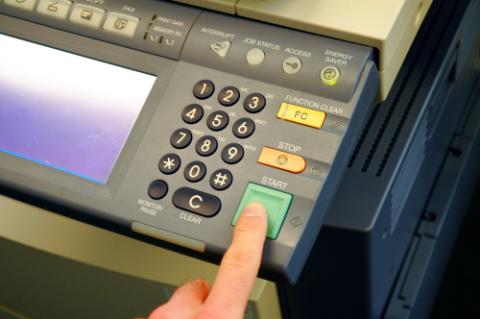If you want to better secure printer workflows, securing your print infrastructure is a key first step, but best practices are just as important as technology.

Once you’ve gone through the process of securing your print infrastructure and the multiple physical locations that are home to your various multi-function printers and connected workstations, you need to foster the desired behaviours and smart policies that help support your broader cybersecurity strategy.
The technology you’ve deployed, including the features and capabilities of printers, scanners and copiers, play an important role on their own, but also help uphold the rules of thumb in the workplace that ensure printer security.
Secure printer workflows with clear rules and user accountability
Gone are the days of people printing what they want and when they want in the office. Not only does securing your print infrastructure mean placing limits on device output by leveraging technology, but also by being clear about what is acceptable behavior from an overall security standpoint.
Technology can help you enforce rules around who can print what, where and when, but you still need to establish policies around who is authorized to use what printers for what purposes. Establishing guidelines regardless of the devices and their security features should be part of your overall cybersecurity strategy, just as you train people not to open email attachments or links from unfamiliar senders, or leave a workstation running without locking it when they go out for a coffee or lunch break.
While it may be tempting to implement secure printer workflows by applying your policy with the device features available, there’s also a chance these mechanisms can fail if only because a device can be overlooked.
In the spirit of transparency, you should communicate the rules, so employees know they are being held accountable, rather than having them find out after the fact they’ve violated security policy. Whether it’s being clear that only the accounting department should be using their printer, or that printing your novel in its entirety outside of office hours is a faux pas, employees should know their print activity is being tracked in the same way anyone wants to know they may be monitored by a security camera.
Securing print infrastructure comes down best practices
A secure printer workflow is heavily dependent on good habits the employees embrace every day, regardless of their role.
A common scenario in any offices is that people keep directing documents to a printer that’s on the fritz. While the features of the device may have the option to make sure the user re-releases the job once it’s up and running again, sometimes once the printer is fixed it starts churning through backlogged jobs long after initial sender has given up. Your policy to secure printer workflows in this case is to make sure everyone is aware that a specific device isn’t printing so they stop sending new jobs, as well as know they will have to re-release that job once the printer is back to normal.
Similarly, it’s not uncommon for people to send a job to the printer and forget about it to the point where a device may have a pile of printed documents sitting in the output tray. A hard and fast rule should be to make employees pick up their print outs. Discarded documents, whether they’re left on the tray or tossed into the recycling bin or the trash pose a security risk if the printed information is intellectual property that’s critical to your competitive advantage or Personally Identifiable Information (PII) that must be protected under privacy legislation. If your printers have a feature that requires people to enter a code to keep their documents from printing until they arrive at the device.
But as much as technology and device features are key to securing your print infrastructure, good employee habits can go a long way to having more secure printer workflows.
RJ Sahi is practice manager for PrinterLogix. Download our printer security primer today to see how you can get started securing your print infrastructure today and improve endpoint security.
